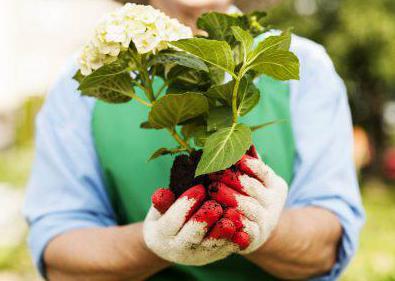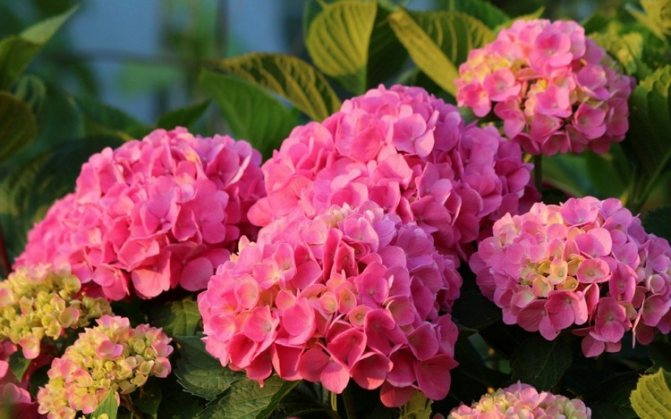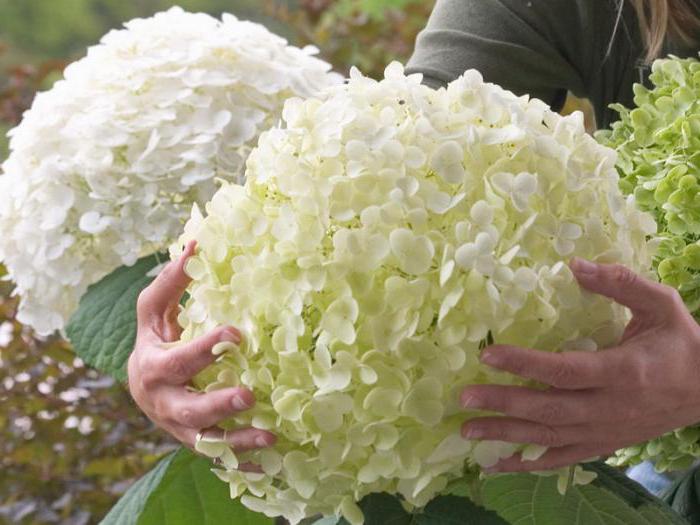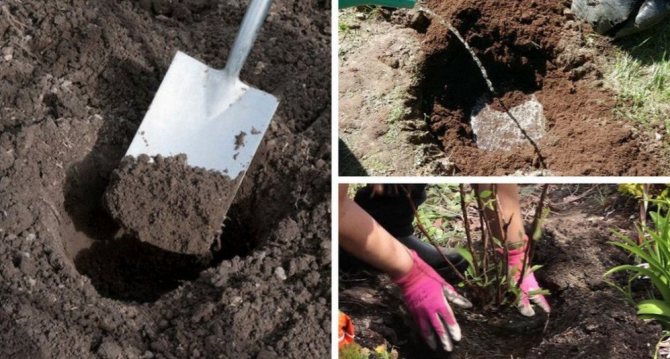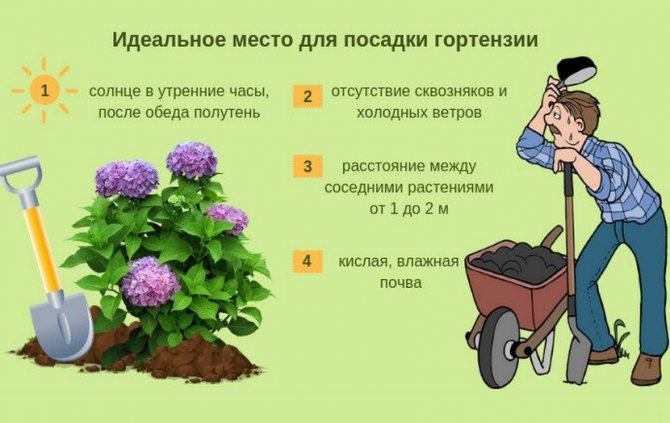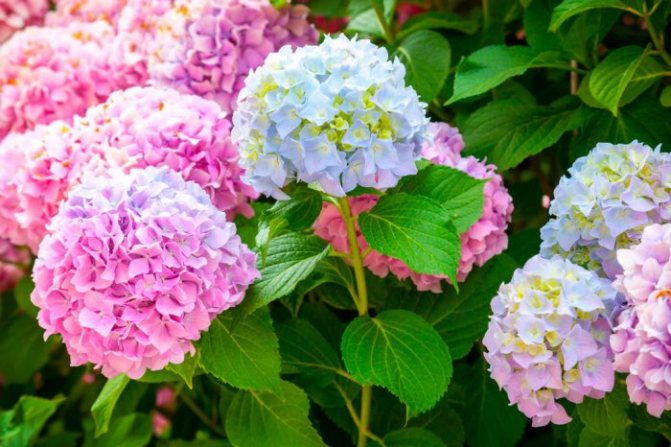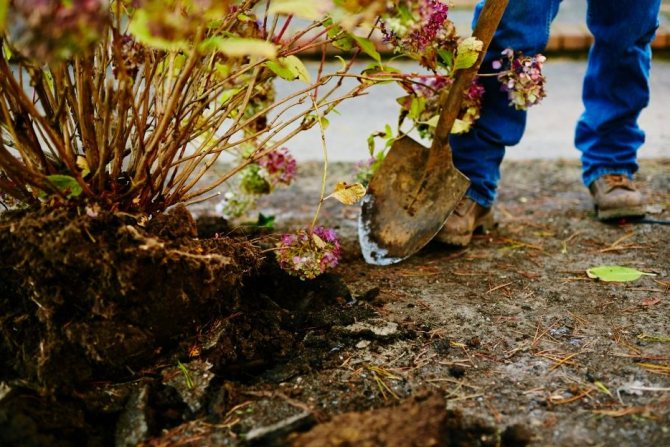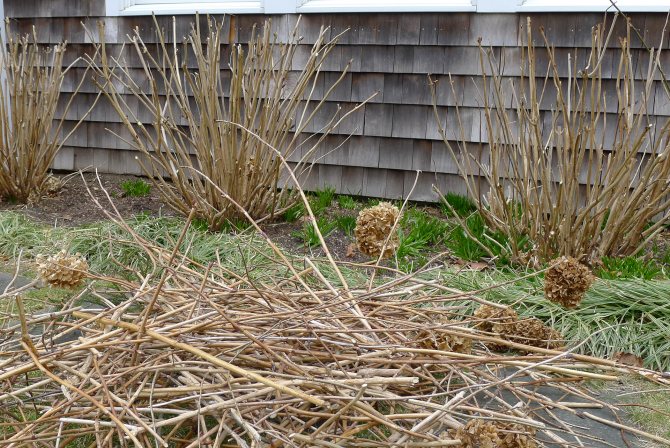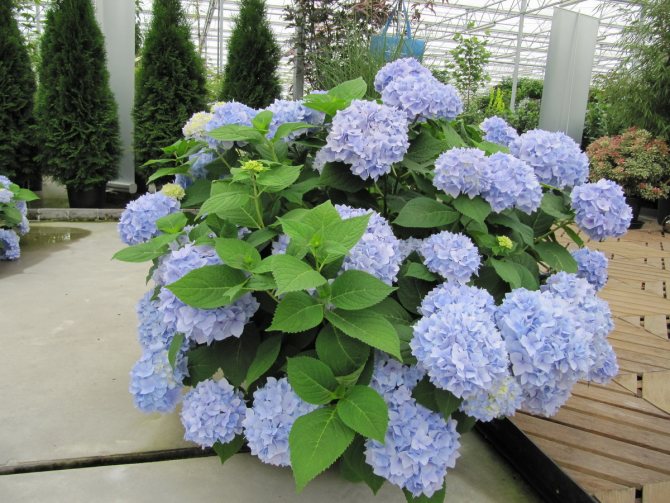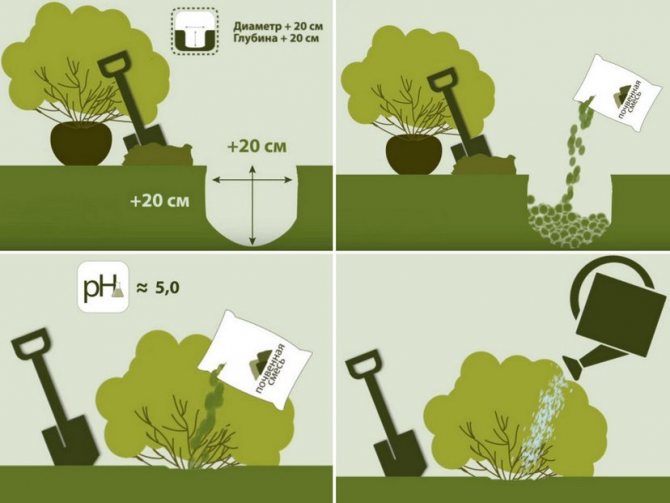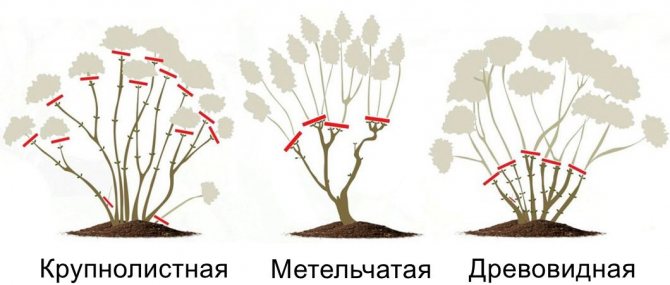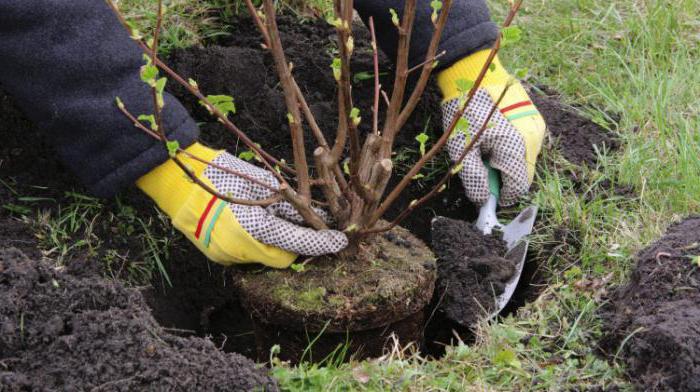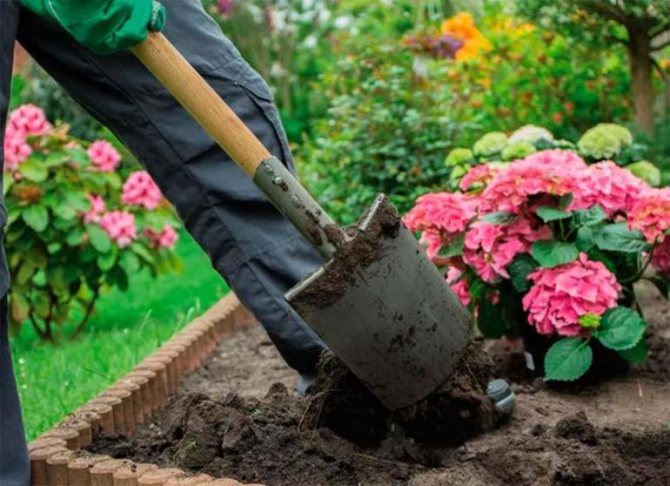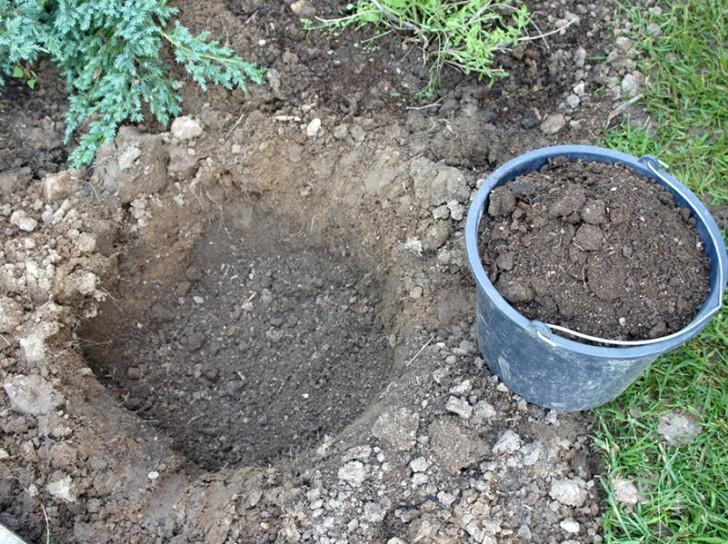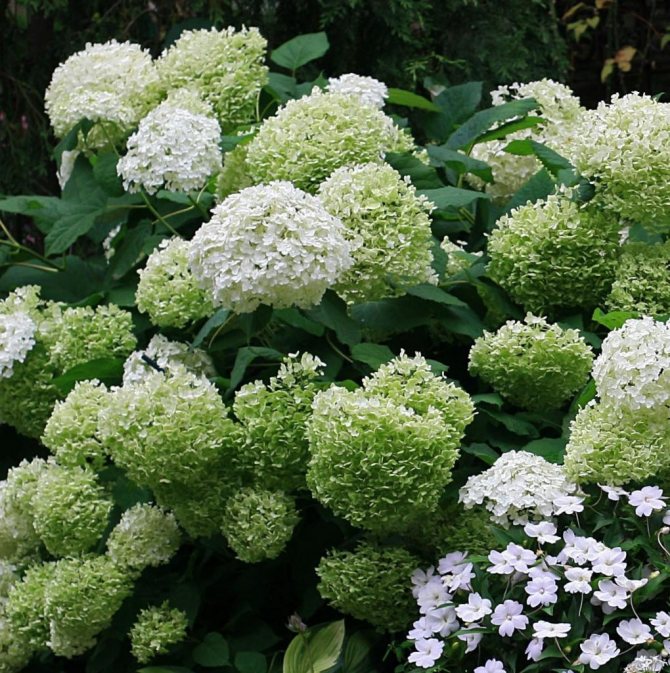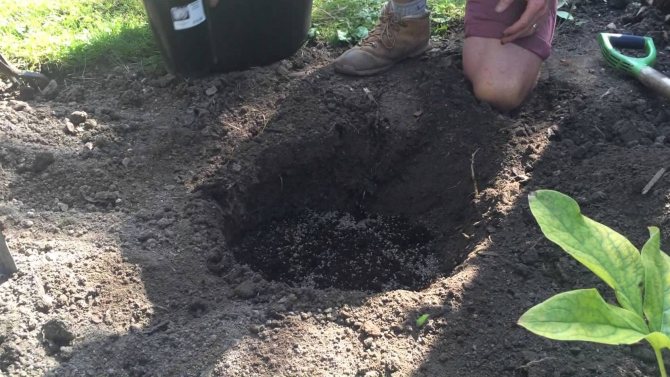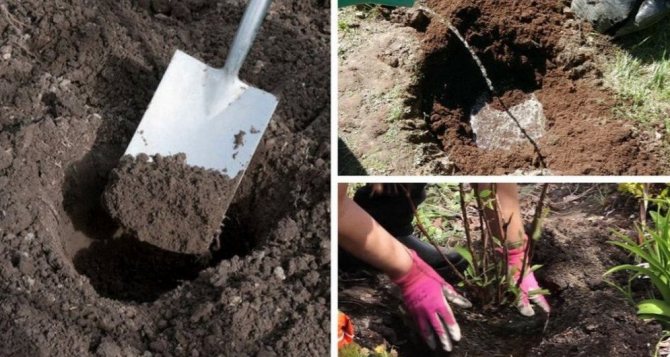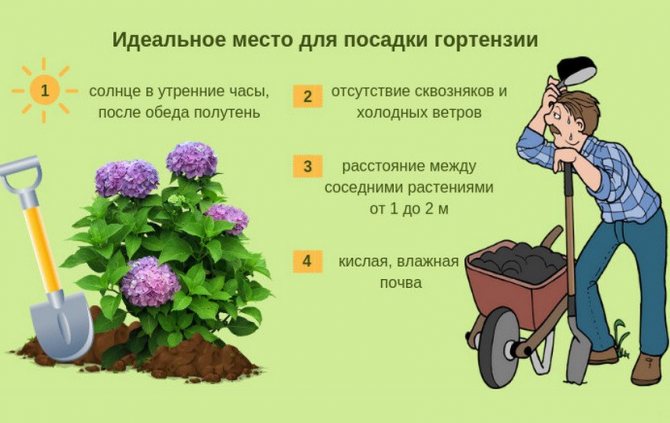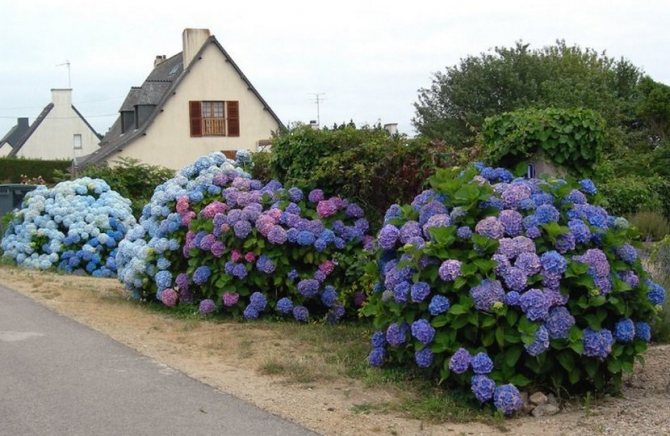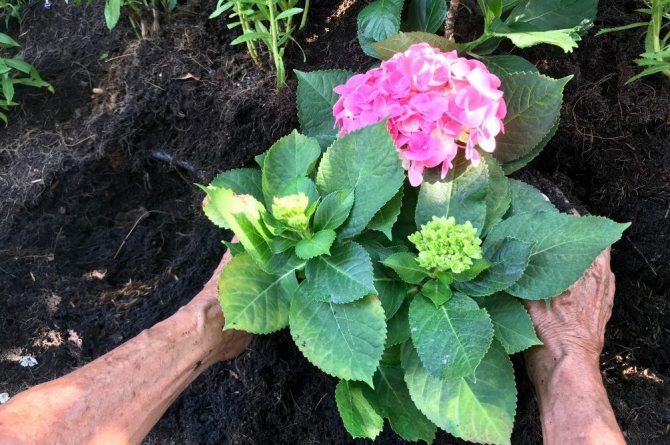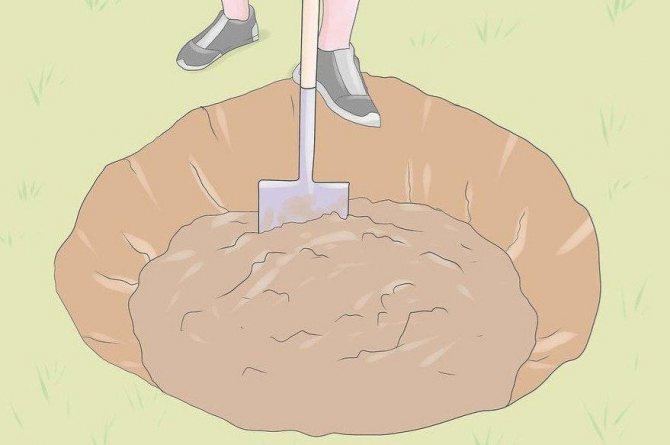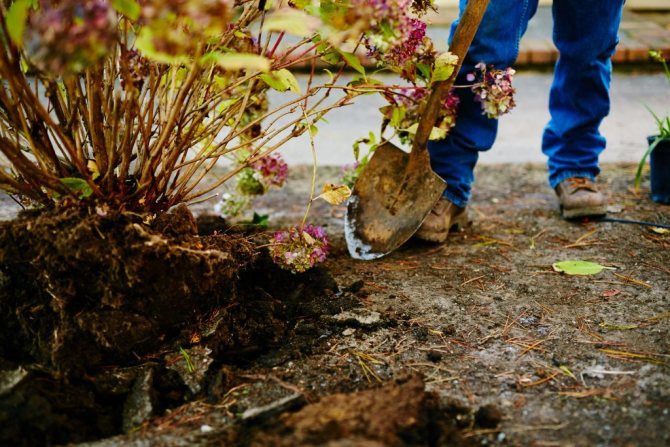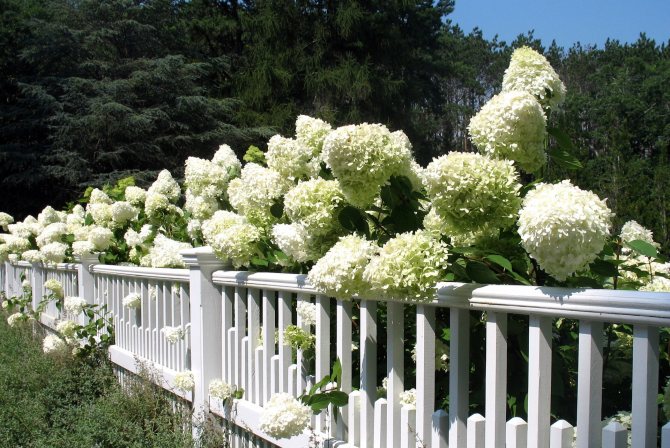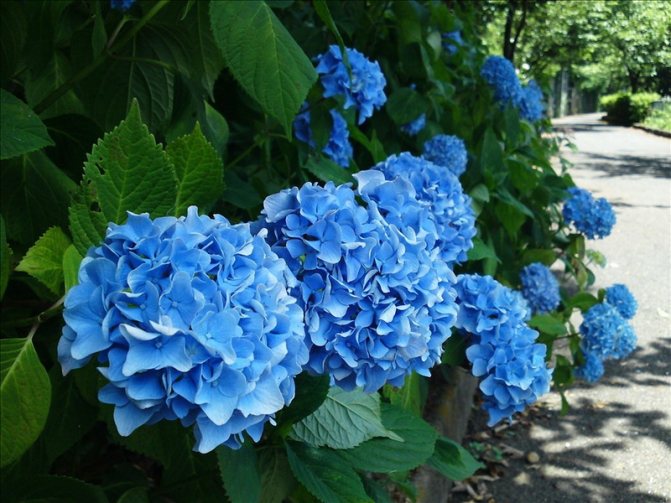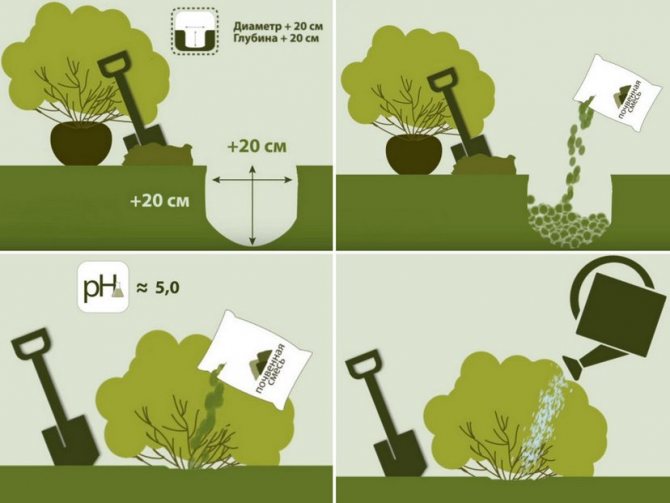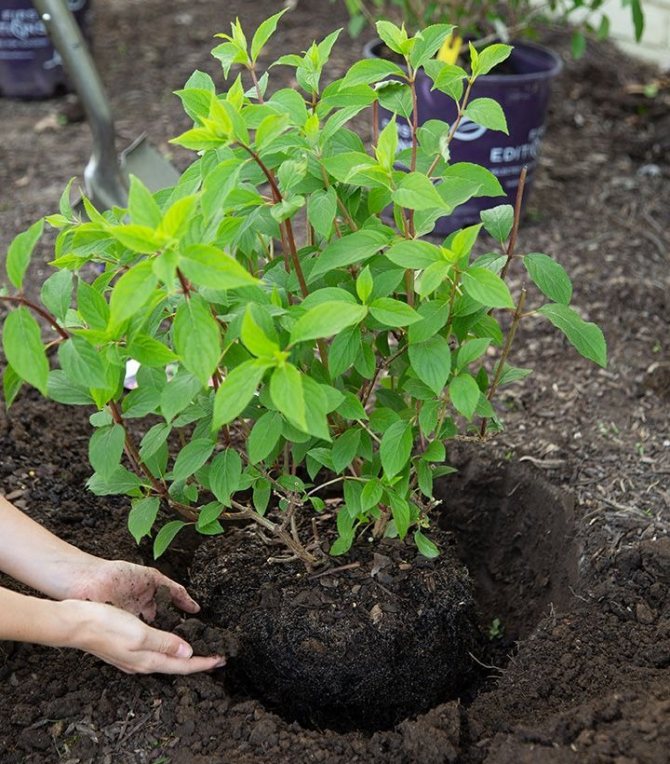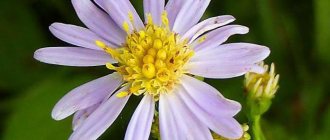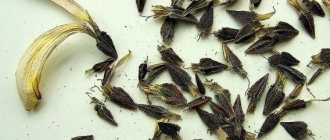On the surface lies the fact that hydrangea is one of the most beautiful plants, which is increasingly found not only in the decoration of urban park areas, but also in the backyards of country houses. And if you already had thoughts about growing a magnificent shrub flower with your own hands, then do not forget that this perennial requires a special attitude towards itself in the process of planting in the fall in open ground. About when and how best to plant various varieties of hydrangeas, about the features of care after autumn planting (watering, feeding, pruning and shelter, diseases and pests), and even how to change the color of hydrangeas, will be discussed in our article.
Plant characteristic
It is not so difficult to answer the question of when to transplant hydrangeas, how to understand what conditions need to be provided for this plant in a new place. This shrub is not particularly picky about the soil and readily grows in almost any conditions. It should be noted that this is a unique and one of a kind flowering shrub that can reproduce by dividing old shrubs.
It is upright and will grow up to two meters. Best suited for shady areas of the garden, grows quickly and has good winter hardiness. This is a stunning plant that will become a gem in the landscape. Prefers slightly acidic substrates, very responsive to mulching. Pine bark, large chips and peat are very good for these purposes. Don't forget to fertilize this plant, this is how you can get thick foliage and amazing flowering. However, if you have purchased one or more shrubs, sooner or later you will have a question about when to transplant hydrangeas, so let's talk about this in more detail.
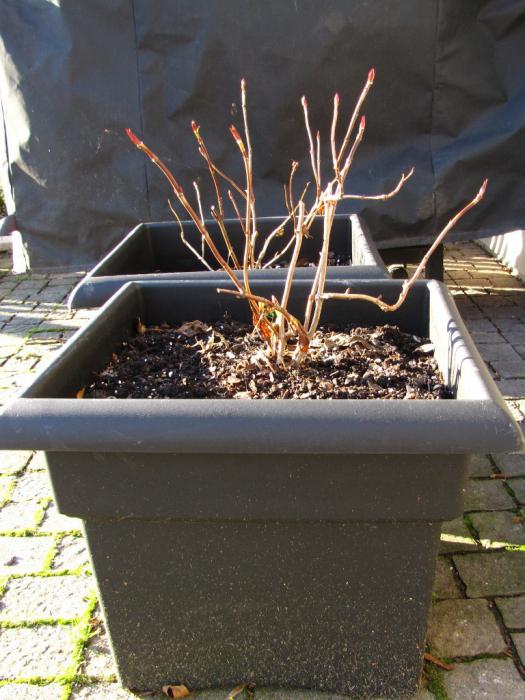
Hydrangea breeding methods
This article will talk about planting in open ground in the fall. ready-made seedlings hydrangeas, but you can grow these lovely flowers in and out of seed, however, this is difficult and time consuming to do. Much faster and more efficiently to propagate hydrangeas layering, dividing the bush (used when transplanting) or cuttings (the most popular way).
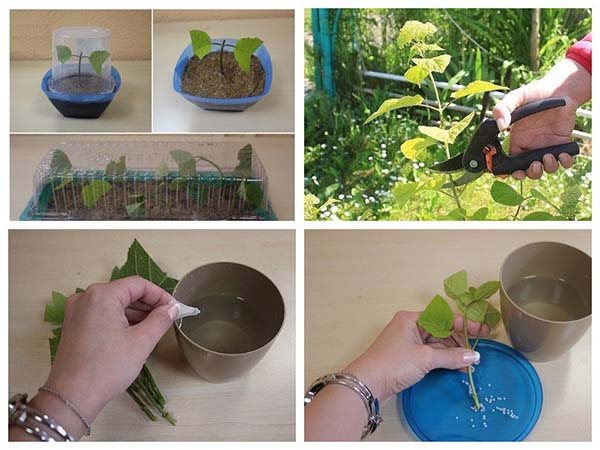

Video: propagation of hydrangea by cuttings
Place for the landing pit
It's incredible how an unpretentious hydrangea can refresh and decorate your garden. Even if you have only one bush, it will very soon grow into a beautiful alley, colorfully decorated with bright inflorescences. To do this, it is enough just to provide normal conditions for its existence. All species of this variety are very hygrophilous. For their normal growth and reproduction, it is necessary to choose a place with calcareous soil, well lit and shaded from the north. The shrub makes particularly high demands on the composition of the soil. It should be very nutritious, with constant moisture.
Expert advice
Since hydrangea is an unpretentious plant, it is able to grow, develop and delight the eye with lush flowers, even in those places that are heavily gassed with car exhaust gases. At home, the plant should still be properly cared for.
Since the crop prefers a large amount of moisture and can grow in swampy places, the soil in the root zone must be constantly watered.This is especially important in the hot summer period. Watering is done once a week, while at least thirty liters of water must be poured under one plant. Experts also recommend using a weak solution of potassium permanganate for soil disinfection.
With the help of blooming hydrangeas, you can transform the garden landscape beyond recognition. You can plant several types of culture in the garden at once and enjoy their lush flowering.
Preparing the pit for planting
First, determine the time of year to transplant your hydrangeas. It can be spring or autumn, below we will tell you what is the advantage of one and the other option. In any case, you will need to prepare the place in advance. Ideally, the planting hole is prepared a month or two before planting the seedling. It should be large enough, 50 m in width and length, and 60 cm in depth. If you need to plant several hydrangea bushes, then you need to maintain a step of one and a half meters, because it grows strongly, and it will be bad if the bushes interfere with each other.
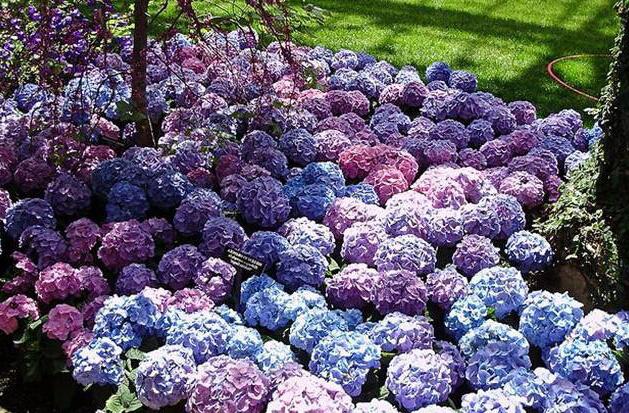

Outdoor Hydrangea Care
Hydrangea is a perennial with special requirements for soil, watering, feeding, pruning and shelter, and they just need to be considered for proper care after planting.
Features of care after autumn planting
In principle, all care for hydrangea after planting in the fall comes down to watering, if it is, of course, necessary, because autumn is rains, which means it is high chance of catching a fungal disease, so as prevention recommended a couple of times shed the soil in the hydrangea trunk circle light pink solution of potassium permanganate.
By the way! Top dressing with potassium permanganate tree hydrangea stimulates the compaction (become thicker and stronger) of the shoots of the bush.
It will be great if you acidify the soil by spilling it a couple of times with a solution of citric acid, vinegar, or another acidifier.
If you decide to land in the fall large-leaved hydrangeathen don't forget very carefully shelter her for the winter.
Watering
As for the hydrangea, it is better to pour it over than not to add it. this plant is very, very moisture-loving.
Soil mix
You will need to make a light and nutritious mixture of peat and humus, leafy earth and sand. All proportions are taken arbitrarily, approximately 1: 1: 1: 1. You can take less sand. In order for the plant to have all the necessary set of trace elements and vitamins, it is necessary to add 0.2 g of potassium sulfate, 0.6 g of superphosphate, 0.1 g of humus and 0.2 g of urea to the soil mixture. Do not forget an important rule: when it is time to transplant the garden hydrangea, it is necessary to place the root collar at the level of the soil. For the first time, it is necessary to install supports that will support the bush and will not allow strong gusts of wind to knock it down. After the root system has taken root well, the props can be removed. However, in the first year, seedlings are very susceptible to freezing. Only mature plants become cold-resistant.
How often can you replant
It is not recommended to disturb the shrub too often, because even after a very successful and seemingly painless transplant, the plant is under stress. This condition leads to long-term adaptation, during which it gets sick and cannot normally develop the aboveground and underground parts. In the most unfortunate cases, this ends with the death of the hydrangea.
It will be interesting for you to learn how to keep hydrangeas in the garden and at home during the winter.
Given the negative consequences, the transplant is recommended only when necessary. For example, next to a flower bed, a tall tree has grown strongly and shades everything around, or an old bush is overly thickened with shoots, and it must be rejuvenated by separation.
Transplant recommendations
It so happens that after transplanting the plant begins to bloom more magnificently, the flowers become larger and more expressive. However, it also happens the other way around: growth stops, and the bush slowly fades away. That is why it is very important to know exactly when to transplant the garden hydrangea. Why can the transplant results be so dramatically different? First of all, it depends on the conditions in which the bush falls, namely on the composition of the soil and watering, the degree of illumination. We have already given recommendations, it is enough to follow them, and you will get a good result. You can also see a real miracle - the pink flowers will suddenly turn blue. This indicates that there is aluminum or iron in the soil. The high acidity of the soil also leads to such changes.
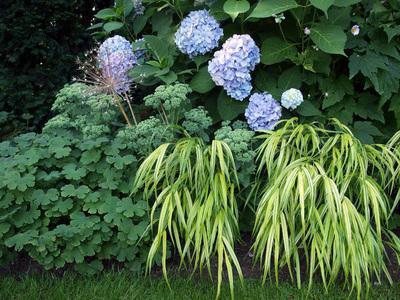

Why hydrangea does not bloom or too abundantly
Hydrangea begins to bloom, as a rule, only in the 4th year, and from 5 years old - abundantly. Therefore, in the first year after planting, it may not bloom (although 3-4-year-old seedlings are usually sold).
It is also worth remembering that a lot of sun is required for good flowering. And in no case should you overfeed the plant with nitrogen in the spring.
By the way! The site has a detailed article about the main reasons why hydrangea may not bloom.
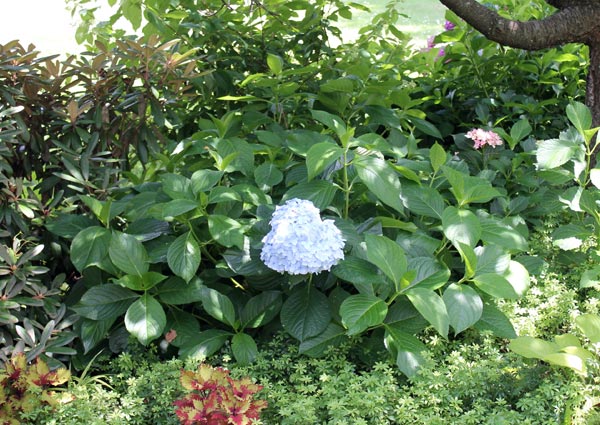

Important! Pruning also directly affects flowering. Without it, for example, it is virtually impossible to achieve a chic and friendly flowering of a tree hydrangea, which blooms only on the shoots of the current year. But it should be understood that this does not apply to all hydrangeas, so it is very important to know the characteristics of your particular variety.
Transplant in spring
They resort to this method if they want the plants to be arranged somewhat differently at the beginning of the summer season, but so that this does not affect future flowering. If we talk about when is the best time to replant hydrangea, then it should probably be said that this is the fall period, but we will tell you about both options.
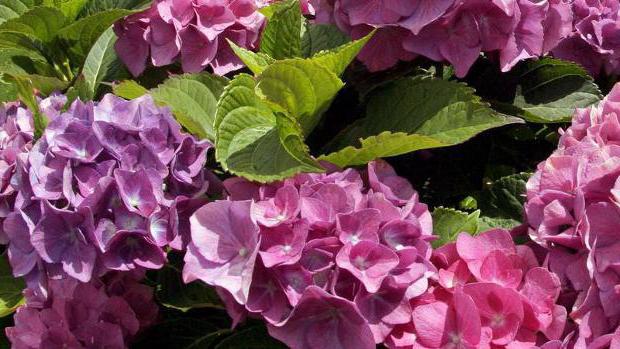

So, early spring. The plant should be moved to a permanent place of residence before the buds begin to bloom, that is, until the soil is completely thawed. This is required in order for the root system to suffer less from the transplant. For this, gardeners prepare new planting holes in the fall, and with the onset of the first cold weather they cut out a clod of earth along with a plant growing in it. In the spring, all that remains is to move this clod of earth from the old to the new place. However, in the case when there is no time to transplant the hydrangea in the spring, or if you are late with all the preparations, leave the bush until autumn.
When to plant hydrangea in the fall: optimal timing
In the fall, it is recommended to plant only seedlings with a developed root system (and preferably those that are in pots, that is, with a closed root system), planting very young seedlings is better to transfer to the spring, because they may not have time to settle down before the cold snap.
The approximate timing of planting hydrangeas in the Middle Lane (Moscow region) is September. In southern Russia, the planting of seedlings may well be postponed until October.
By the way! Large-leaved (the most frost-resistant, requiring a solid shelter for the winter) hydrangea is usually planted in the spring. Warm southern regions are an exception.
Can I plant in spring
Hydrangeas can also be planted in spring. As a rule, it is in the spring that hydrangeas are planted in cold climates, for example, in Siberia and the Urals. In the same Central lane (Moscow region) large-leaved hydrangea (which needs to be covered for the winter) it is also recommended to plant exactly in the spring, approximately in the second half of April-May.
Autumn transplant
Most importantly, prepare your transplant site in advance. Speaking about when to transplant hydrangea in the fall, it should be noted that you should not rush, you need to let the bush get ready for the fall, but you should not be late either. The best time to plant is the end of September.The plant still has enough time to take root, but at the same time it will not grow back, which means the death of young shoots.
Fertilizing the plant will not need a few more years, since during transplantation the planting pit is filled with a special mixture into which fertilizers are introduced. However, it is up to you to decide when it is best to replant hydrangea, based on the needs of your garden.
How to transplant hydrangea in spring
Transplanting hydrangeas in the spring requires a serious approach from the summer resident. An improperly performed procedure can cause enormous harm.
Correct transplanting in the spring implies not only the correct choice of place and time, but also the preliminary preparation of the pit and soil. It is important not to forget that hydrangeas are very sensitive to violations of agricultural technology.
Selection and preparation of the landing site
Experts advise choosing a quiet place protected from strong winds for transplanting hydrangeas in spring. Drafts can cause hypothermia, which can adversely affect growth and development.
Although hydrangea is considered a shade plant, it will not bloom without the sun. Ideally, the location should be such that it is only illuminated before or after lunch, and at noon it is protected from the scorching sun.
Hydrangea loves fertile, slightly acidic soil. If you transplant into calcareous or alkaline soil, then in the future the plant will not bloom profusely and for a long time, and its buds will be pale and inconspicuous. Therefore, it is important to measure the acidity of the soil before planting.
Swampy and overly humid areas will also not work. When transplanting hydrangeas in the spring, it should not be allowed that the distance between the fence or any structure and the bush is at least 1.5 m.Otherwise, the root of the bush may freeze in winter.
The pit is prepared several months before the transplant. It is half covered with a mixture, which includes black soil, peat, deciduous humus and sand. These ingredients are mixed in equal proportions. Then 25 g of superphosphate and 25 g of potassium sulfate are added to 1 cubic meter of the mixture. The size of the transplant pit should directly depend on the age of the hydrangea and the size of its root system. Usually, for bushes under 3 years old, holes are made 50 cm3 in size, for plants aged 3-5 years - 1 m3, and over 5 years old - 1.5 m3.
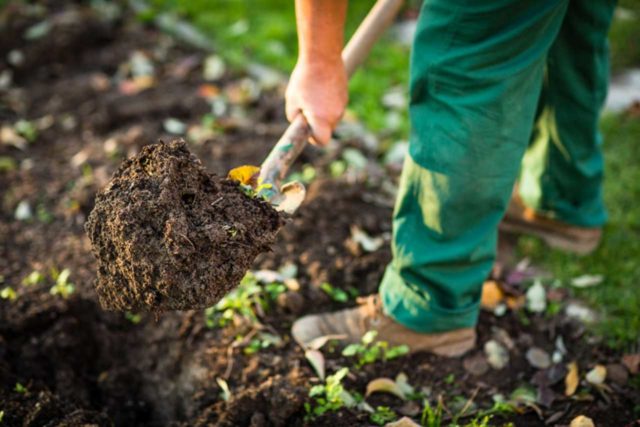

The seat should be selected and prepared in advance
Preparing hydrangea for transplant
In order for the bush to take root better after transplantation, it is prepared in advance. They do it this way: in summer or autumn, a circular trench is made around the crown with a depth and width of about 25 cm. It is filled with loose humus and sprinkled with ordinary earth on top. By the time of transplanting, the bush will take root into the organic layer. Also, before transplanting the plant, pruning is carried out in the spring: strongly thickening, diseased and dry branches are removed.
Rules for transplanting hydrangea in spring
Regardless of when the transplant takes place, in autumn or spring, the procedure is performed in this order:
- A day before the procedure, the prepared pit is watered. This requires 15-20 liters of water. If it rains recently, this moment is missed.
- Pebbles, broken brick, etc. are laid out at the bottom of the pit. This material will play the role of drainage and prevent decay of the root system.
- The branches are tied with a cord so that they do not interfere.
- On the outside of the trench, the plant is carefully dug in. They try to do this so as not to damage the root system.
- The plant is taken out together with an earthen lump. The earth is not knocked down.
- The bush is placed in a prepared hole and sprinkled with soil, tamped.
- Mulching is performed. Sawdust or tree bark is used as mulch. This is to ensure that the liquid does not evaporate too quickly.
- Install the support. It is needed so that the bush, weakened after transplanting in the spring, does not fall. They remove it after the final rooting of the culture.
Important! The bush is watered only a few days after planting.If you do this right away, you can provoke hypothermia of the root system.
Division or grafting
It should be noted that if you are pursuing the goal of increasing the number of bushes on your site, and not changing their location, then such drastic methods may not be required. Lignified branches are perfect for cuttings, which are cut in the fall and stored on the lower shelf of the refrigerator, and planted in moist soil closer to spring. When the plants are rooting, they are ready to be transplanted to their primary location in the garden. This plant has a large number of different varieties, but the agricultural technology is almost the same. Therefore, speaking about when to transplant panicle hydrangea, we mean all the same techniques. You can transplant and divide in spring and autumn, and even a summer transplant can give a good result, only flowering can be delayed.
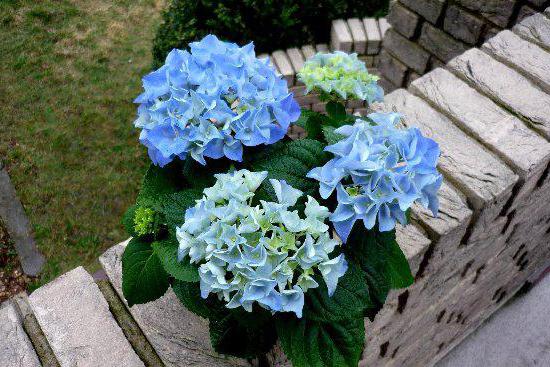

Varieties of hydrangea
The main types of hydrangeas are:
- Paniculata (it is also called garden hydrangea);
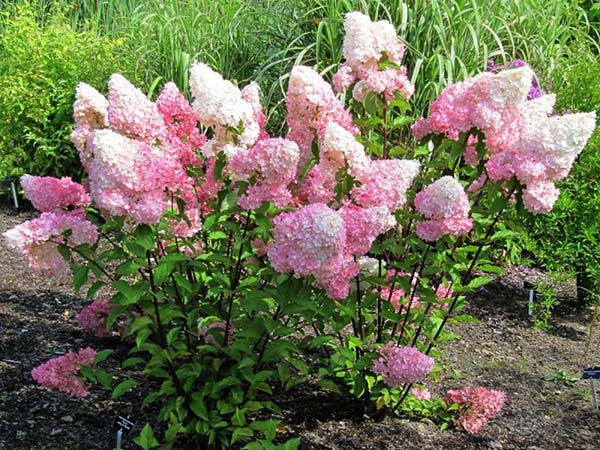

- Large-leaved;
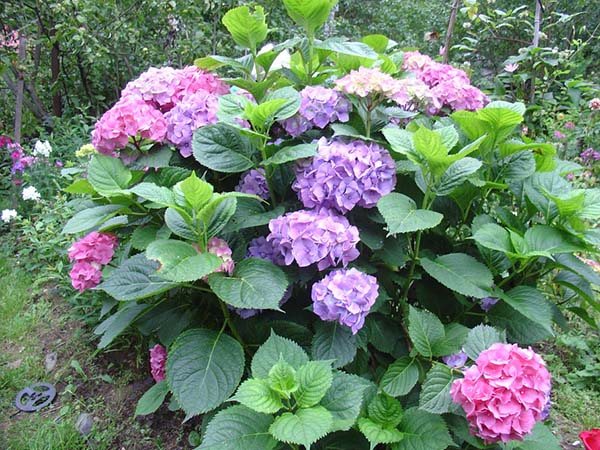

- Tree-like.
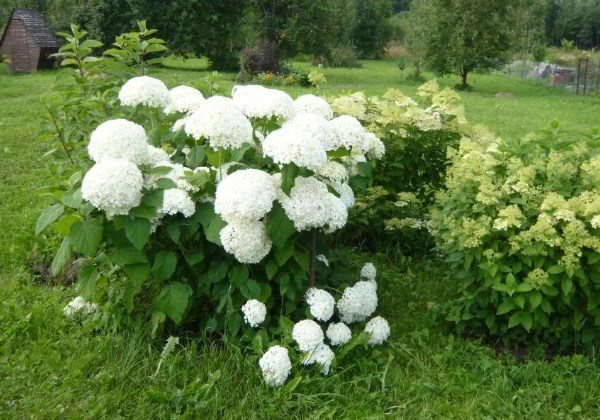

There is also petiolate (curly, climbing) hydrangea, but it is grown much less often.
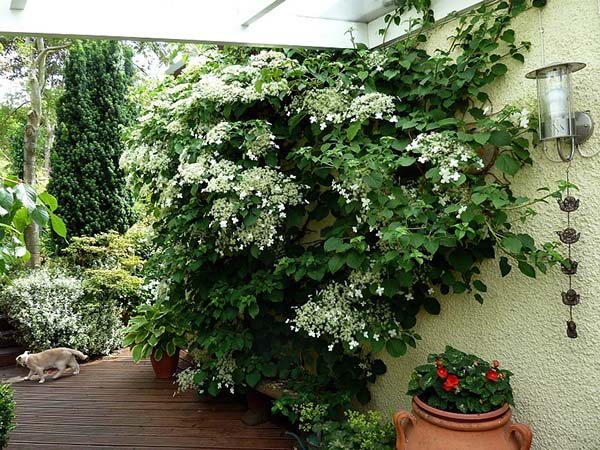

Naturally, each variety has a wide variety of varieties.
Video: types and varieties of hydrangeas
Let's summarize
To transplant a beautiful hydrangea, nothing impossible is required from you. It is enough to choose a good place for planting and choose a suitable soil mixture. After that, the last difficult nuance will remain - to choose the right moment for landing. Early spring is best. You can transplant at the beginning of May, when the soil is already well warmed up and ready to accept the bush. If you did not have time to do this, then you will need to transplant in September, when it is no longer too warm, but there is no night frost.
Care after landing
In order for the bush to grow and develop well after transplanting a hydrangea in a panicle spring, it must be properly looked after. It is watered twice a week. This consumes about 15 liters of water. Only soft, settled water is suitable for irrigation. If it's too tough, you can add a little lemon juice or apple cider vinegar to it. Rainwater collected during precipitation is ideal for these purposes. The liquid should be at room temperature, therefore, if necessary, it is heated. It is especially important not to allow the soil to dry out in the first half month after planting. In case of frequent precipitation, the frequency of soil moistening is reduced.
When weeds appear, they immediately try to remove them. Grass draws moisture and nutrients from the ground, which is especially bad for young seedlings. In addition, viruses and bacteria, insect pests actively multiply in the grass. This greatly increases the risk of disease.
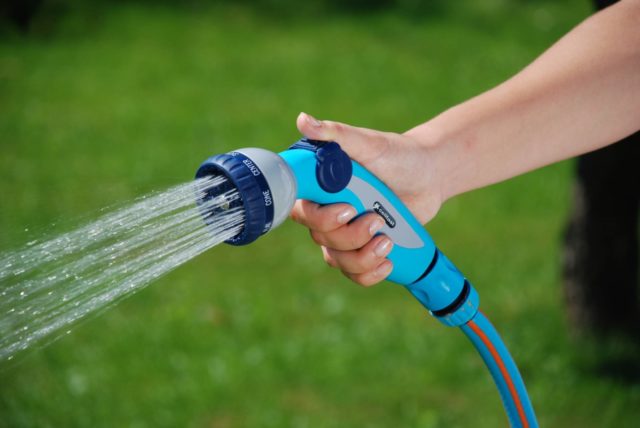

Bushes that have undergone a transplant are especially in need of care.
To facilitate the access of oxygen to the roots, the soil is regularly loosened to a depth of about 15 mm. The procedure is repeated every time after watering.
The bush must be prepared for winter. For insulation, peat, dry foliage, straw and sawdust are poured under it. The thickness of this layer should be about 20 cm. The branches are tied with rope and wrapped in burlap or spunbond. When growing a crop in a cold region, it is additionally covered with snow in winter so that a snowdrift is formed above it.
Requirements for the site for growing hydrangea
Hydrangeas grow well in areas exposed to sunlight in the morning. The rest of the time, the bush should be in a light shade - this will only benefit him. Remember: the sun's rays are good in moderation, and constant exposure to the sun leads to leaf burns, crushing and drying of inflorescences. A strong shade is also undesirable, since in this case the plant will not bud and will lose its decorative effect.The place in the flowerbed must be protected from drafts and winds. The minimum distance to the nearest buildings is 1.5 meters, in order to avoid freezing of the roots in the cold season. In addition, it excludes the finding of any structures, water or snow from which can fall on the branches of the bush and damage them.
If a blue or purple hydrangea is purchased, care is taken to keep it in color. For this, aluminum salts are included in the top dressing. If you apply other fertilizers, the blue or purple plant will turn pink over time.
Hydrangeas love acidic soil, so peat must be added to the soil. It is desirable for ph to be close to 5.5. The proportions are used as follows:
- leafy soil - 2 parts,
- humus - 2 parts,
- sand and peat - 1 part each.
If it is decided to transplant a hydrangea, 20 g of carbamide (urea) and potassium sulfate, 60 g of superphosphate are added for every 10 kg of the mixture. Nitrogen fertilizer (urea) is applied if it is necessary to plant in the spring, in the autumn there is no need for it. The mixture is poured into the pit, forming a cone-shaped mound in the center.
Fresh manure should not be used, as it shifts the acidity index to neutral or alkaline, and leads to chlorosis of the leaves.
Heavy soil is corrected by adding another part of river sand. The lower the acidity, the more peat is added.
Preparation for wintering
After pruning, you can prepare the plant for wintering. This process can be started as early as September. Leaves are removed on hydrangeas, leaving them only on the tops of the shoots. This will allow green shoots to ripen faster. Next, fertilizers are applied. In October, you need to prune, and then think about creating a shelter.
If the bush is small, you can completely cover it with peat. Then it is covered with a film. If the plant is large, it is tied with a rope, and then very carefully the branches are pulled to the ground. On it, you must first make a flooring of boards. They are nailed to the ground with long nails. The bush is thrown with sawdust or spruce branches. From above, the plant is covered with lutrasil or other similar material.
Having considered the basic rules for the care and planting of hydrangeas in a tree-like autumn, you can grow a beautiful shrub that will become an adornment of landscape design.
Pruning features
Hydrangea tree-like in autumn needs pruning. Some gardeners carry out this procedure in the spring. However, most experts agree that it is better to do this work in the fall. Pruning is performed when the movement of sap in the plant slows down. This can usually be done as early as October.
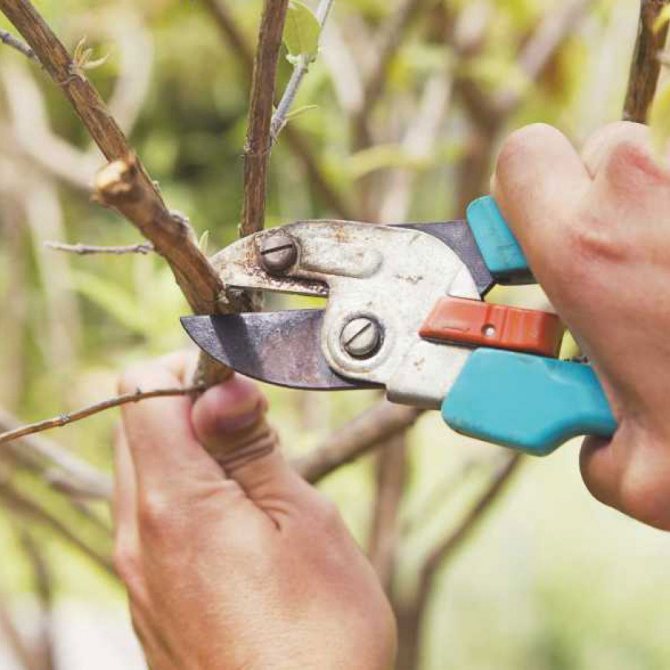

In large-leaved hydrangea, pruning is exclusively cosmetic in nature, since the flowers on it are formed on the shoots of the last year. But for tree varieties, it is more advisable to prune it in the fall. In such plants, inflorescences are formed on the shoots of this year.
It is worth considering that the hydrangea is pruned at the age of four years and older. Autumn pruning is safer than spring pruning. At this time of the year, the risk of harming the plant is significantly reduced, since it will be immediately clear that the sap flow in the trunk has slowed down. When the leaves have already fallen off, you need to remove dry, diseased shoots. Skeletal branches are not affected. If several shoots grow from one point, only one is left, but the healthiest and strongest.
Advantages and disadvantages of autumn planting
Benefits of planting a hydrangea seedling in the fall:
- With normal rooting, flowering can be seen as early as next season.
- It is much easier to prepare the site and soil for planting, because the soil is warmed up enough.
- You do not have to worry that pests and diseases will encroach on a young shrub.
- You can save time in the spring, because there are a lot of things to do this season, and calmly plant a flower culture in the fall.
Disadvantages of autumn planting:
- If you plant it at the wrong time, close to frost, then the seedling will not have time to take root, will freeze and die.
- After the procedure, before freezing, you need to take a responsible approach to protecting the shrub from frost. To do this, you need to spend time for shelter, mulching.
- Abundant rain and cool weather can trigger fungal infections.
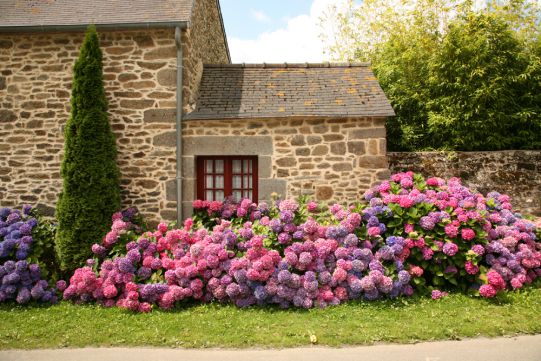

Shelter hydrangea for the winter
Young plants must be wrapped before the onset of winter frosts. This operation can only be abandoned in the southern regions of the country.
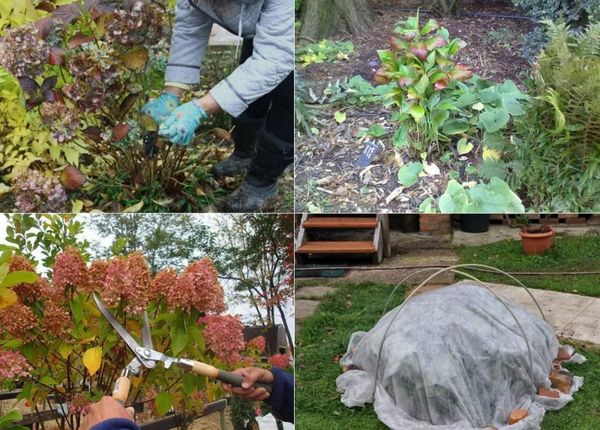

With the onset of weather, with a daytime air temperature of -2 -5 degrees, the bush is heaped with sawdust, peat, straw cutting to a height of 30 cm.
Hydrangea shoots are tied in a bundle or individually bent to the surface of the ground and fixed in this position. Spruce branches, burlap or agro-cloth are thrown over them.
In the spring, the shelter is removed, preventing the plant from heating up.
general information
Hydrangea is a thermophilic flower that needs moisture and good fertile soil. If these components are respected by the grower, then the autumn planting of hydrangeas will be successful.
There are many different types of this plant, the most popular of which are:
- tree-like;
- freise;
- garden (another name for large-leaved);
- petiolate;
- vanilla;
- paniculate;
- Sargent, etc.
Each of this species, when landing, has some peculiarities. But there are also a number of general rules.
Varieties and types of hydrangea
Now you can find various types and varieties of garden hydrangea, consider the most popular:
- Tree hydrangea... The most common type of flower crop in Russia, many varieties are perfect for growing in many regions of our country due to their adaptability to weather and climatic conditions. Treelike hydrangea prefers both sunny areas and places with partial shade. Popular varieties of this type: "Anabel", "Radiant", "Hayes Starburst", "Sterilis". The photo illustrates the variety:
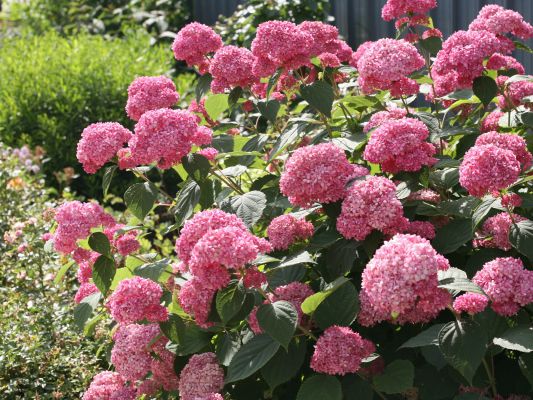

- Paniculata. Just like tree hydrangea, panicle hydrangea is very popular and widespread in our country, because climatic conditions are suitable for its cultivation. It is necessary to plant panicle hydrangea in partial shade: when grown in open sunny areas, flowers and inflorescences will become smaller. However, landing in full shade should not be allowed! Popular varieties of this type are "Vanilla Freise", "Limelight", "Phantom", "Pinky Winky", "Matilda", "Grandiflora".
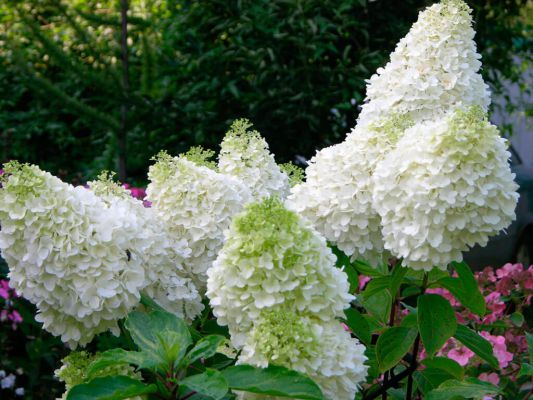

- Petiolate hydrangea... It is also called "climbing", "curly", "liana". This type of flower culture is found in our country less often than the types mentioned above. The climbing plant can grow many meters, suitable for lovers of climbing vines. Grows well and develops in the shade.
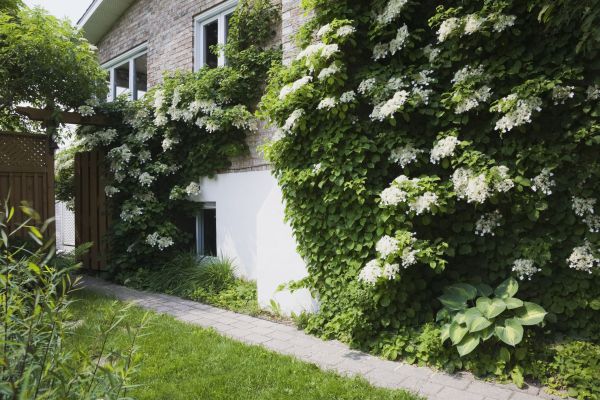

- Large-leaved hydrangea. Differs in beautiful flowers and leaves, this species is planted relatively rarely in our area, because it is thermophilic and needs special growing conditions. If you have planted this kind of culture, then in the fall it needs to be very well covered before the winter cold.
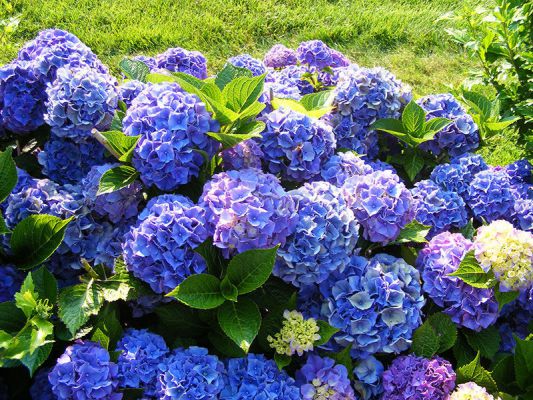

- There is also an oak-leaved, ground cover hydrangea, Bretschneider.
Advice! For planting, it is best to choose paniculate and tree-like hydrangea species, as they are better suited for growing in our country.
Diseases and pests
Hydrangea is quite resistant to the attack of various pests, but, like other crops, it can be affected by ailments and parasitic insects.
Learn how to deal with hydrangea diseases and pests.
One of the most common plant diseases is powdery mildew. To eliminate this pathology, "Fundazol" should be diluted in water (20 g per 10 l) and irrigate the culture. An effective remedy is a solution of Bordeaux mixture (80 g per 10 l of water).
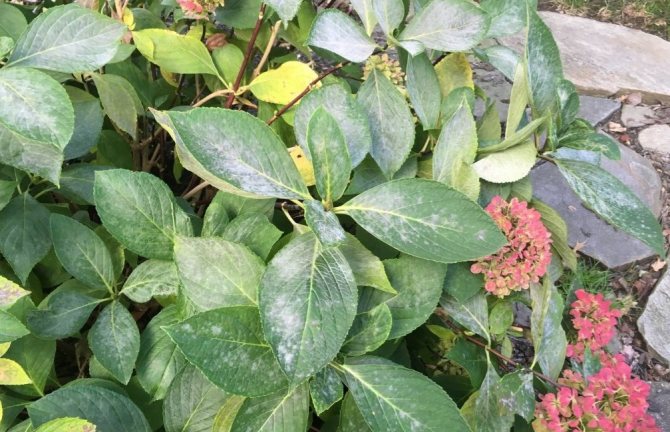

Aphids are a common pest for hydrangeas. Use of garlic tincture is considered a good countermeasure.To do this, you need 250 g of chopped spicy product to pour 10 liters of water. After sustaining 48 hours, add 50 g of grated laundry soap to the resulting infusion. The components must be mixed thoroughly. Spraying is carried out 1 time in 7 days until the disappearance of the pest.


Hydrangea is a flowering shrub that requires special attention when planting. Proper crop care is very important for the formation of a healthy plant, and implies regular watering, fertilizing, clipping, and preparation for wintering. If the gardener performs all the actions correctly, according to certain agrotechnical rules, then he will receive an attractive bush, densely decorated with flowers.
What is the root system of a hydrangea
The hydrangea rhizome is located shallow in the soil. The roots are characterized by a fibrous structure. The root shaft is not very pronounced, it is lost in the density of the lateral processes, which partially deepen, but to a greater extent are located horizontally. The considered part of the culture usually reaches a length of 0.4–0.6 m, and a width of more than 0.7 m.
Planting hydrangeas requires special attention to the root system:
- Its densely branching structure requires a lot of free space in the ground hole.
- The lateral processes of the roots are very sensitive to mechanical damage. This fact should be taken into account when placing a plant in a planting pit and with further loosening of the soil.
- The insufficient depth of the root system indicates the need to protect it by planting a culture at a certain distance from the rapidly growing representatives of the flora.
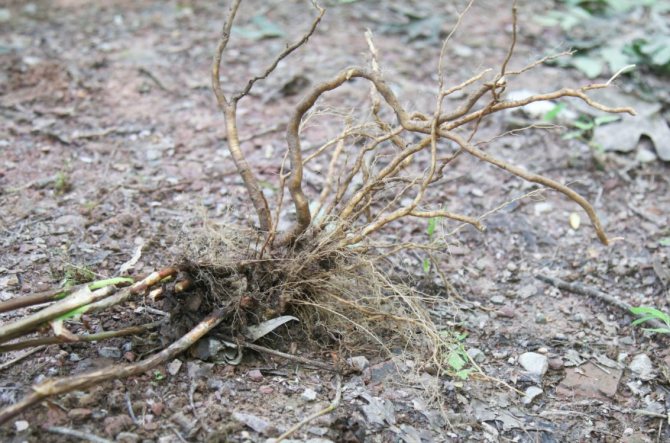

Choosing a landing site
Ideal planting conditions are a quiet, windless place with weak shade and slightly acidic soil. First of all, the type of soil is determined. It is advisable not to plant the plant on calcareous and alkaline soil. Swampy and too wet areas, soils that are poor in micronutrients, are also not suitable.
The location chosen for the hydrangea transplant should be in light partial shade. It is desirable that the sun's rays fall on it in the first or second half of the day. It is better not to plant the plant in open areas. And in a deep shade, you will not be able to achieve the desired abundance of flowering.
Remember that the place for growing hydrangeas must be protected from the piercing wind and constant drafts. They can lead to hypothermia of the plant, and this negatively affects the growing season. In addition, when replanting a garden hydrangea, pay attention that the distance from the fence and various structures to the bush is at least 1.5 m.In the bushes planted closer in winter, the root system may freeze.
